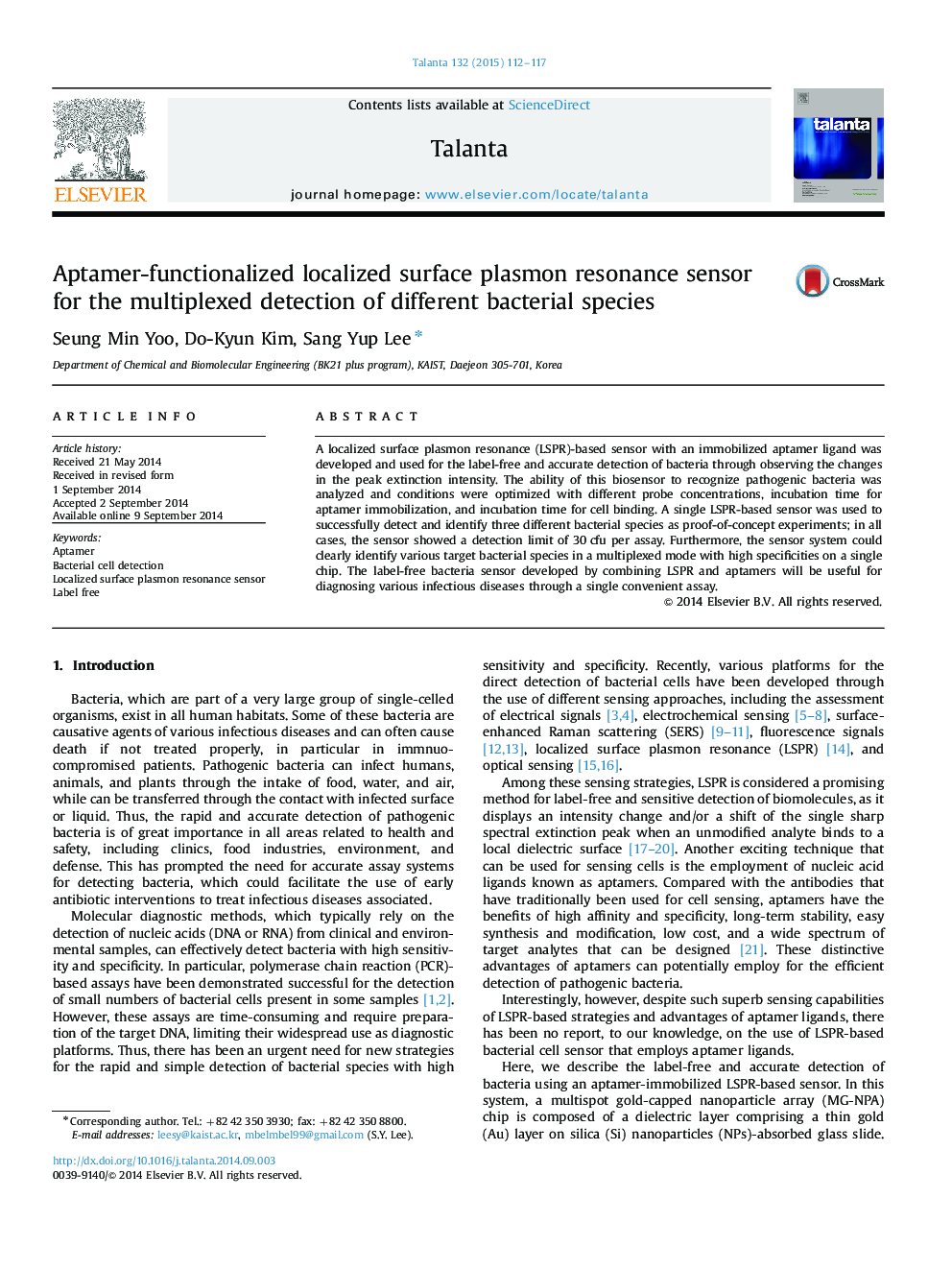| Article ID | Journal | Published Year | Pages | File Type |
|---|---|---|---|---|
| 1241995 | Talanta | 2015 | 6 Pages |
•The aptamer-immobilized LSPR sensor was developed for bacteria detection.•The optimal condition for aptamer binding on LSPR chip was determined.•The optimal condition for bacteria detection was determined.•Rapid, accurate, and multiplexed detection of different bacteria is possible.
A localized surface plasmon resonance (LSPR)-based sensor with an immobilized aptamer ligand was developed and used for the label-free and accurate detection of bacteria through observing the changes in the peak extinction intensity. The ability of this biosensor to recognize pathogenic bacteria was analyzed and conditions were optimized with different probe concentrations, incubation time for aptamer immobilization, and incubation time for cell binding. A single LSPR-based sensor was used to successfully detect and identify three different bacterial species as proof-of-concept experiments; in all cases, the sensor showed a detection limit of 30 cfu per assay. Furthermore, the sensor system could clearly identify various target bacterial species in a multiplexed mode with high specificities on a single chip. The label-free bacteria sensor developed by combining LSPR and aptamers will be useful for diagnosing various infectious diseases through a single convenient assay.
Graphical abstractAptamer-immobilized LSPR biosensor system was developed for the rapid, specific, accurate, and multiplexed detection of different bacterial species.Figure optionsDownload full-size imageDownload as PowerPoint slide
